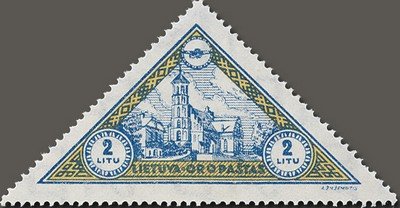Stamp: Child welfare (Lithuania 1932)
Child welfare (Lithuania 1932)
23 July (Lithuania ) within release Lithuanian scenarios goes into circulation Stamp Child welfare face value 2 Lithuanian litas
| Stamp Child welfare in catalogues | |
|---|---|
| Michel: | Mi:LT 331A |
Stamp is square format.
Also in the issue Lithuanian scenarios:
- Stamp - Child welfare face value 2;
- Stamp - Child welfare face value 2;
- Stamp - Child welfare face value 5;
- Stamp - Child welfare face value 5;
- Stamp - Child welfare face value 10;
- Stamp - Child welfare face value 10;
- Stamp - Child welfare face value 15;
- Stamp - Child welfare face value 15;
- Stamp - Child welfare face value 25;
- Stamp - Child welfare face value 25;
- Stamp - Child welfare face value 50;
- Stamp - Child welfare face value 50;
- Stamp - Child welfare face value 60;
- Stamp - Child welfare face value 60;
- Stamp - Child welfare face value 1;
- Stamp - Child welfare face value 1;
- Stamp - Child welfare face value 3;
- Stamp - Child welfare face value 3;
- Stamp - Child welfare face value 5;
- Stamp - Child welfare face value 5;
- Stamp - Child welfare face value 10;
- Stamp - Child welfare face value 10;
- Stamp - Child welfare face value 15;
- Stamp - Child welfare face value 15;
- Stamp - Child welfare face value 20;
- Stamp - Child welfare face value 20;
- Stamp - Child welfare face value 40;
- Stamp - Child welfare face value 40;
- Stamp - Child welfare face value 60;
- Stamp - Child welfare face value 60;
- Stamp - Child welfare face value 1;
- Stamp - Child welfare face value 1;
|
Data entry completed
53%
|
|
|---|---|
| Stamp Child welfare in digits | |
| Country: | Lithuania |
| Date: | 1932-07-23 |
| Perforation: | line 14 |
| Format: | Stamp |
| Face Value: | 2 Lithuanian litas |
| Print run: | 25000 |
Stamp Child welfare it reflects the thematic directions:
The Kionga Triangle (German: Kionga-Dreieck, Portuguese: Triângulo de Quionga) was a small region of German East Africa situated at the mouth of the Ruvuma River. The Ruvuma served as the border between the German colony and Portuguese Mozambique, and the Kionga Triangle was the only section of German East Africa south of the river. Its principal settlement was Kionga (now Quionga ) which had a population of 4,000 in 1910. It became a German possession in 1894 but came under Portuguese control in April 1916 during World War I. The post-war Treaty of Versailles reaffirmed that the river was the border between Tanganyika, then under British control, and Portuguese Mozambique. The triangle was the only territory that the treaty awarded to Portugal.
A church building, often simply called a church, is a building used for Christian religious activities, particularly worship services. The term in its architectural sense is most often used by Christians to refer to their religious buildings, but it is sometimes used (by analogy) for buildings of other religions. In traditional Christian architecture, the church is often arranged in the shape of a Christian cross. When viewed from plan view the longest part of a cross is represented by the aisle and the junction of the cross is located at the altar area. Towers or domes are often added with the intention of directing the eye of the viewer towards the heavens and inspiring church visitors. Modern church buildings have a variety of architectural styles and layouts; many buildings that were designed for other purposes have now been converted for church use; and, similarly, many original church buildings have been put to other uses. The earliest identified Christian church was a house church founded between 233 and 256. During the 11th through 14th centuries, a wave of building of cathedrals and smaller parish churches occurred across Western Europe. A cathedral is a church, usually Roman Catholic, Anglican, Oriental Orthodox or Eastern Orthodox, housing the seat of a bishop.

